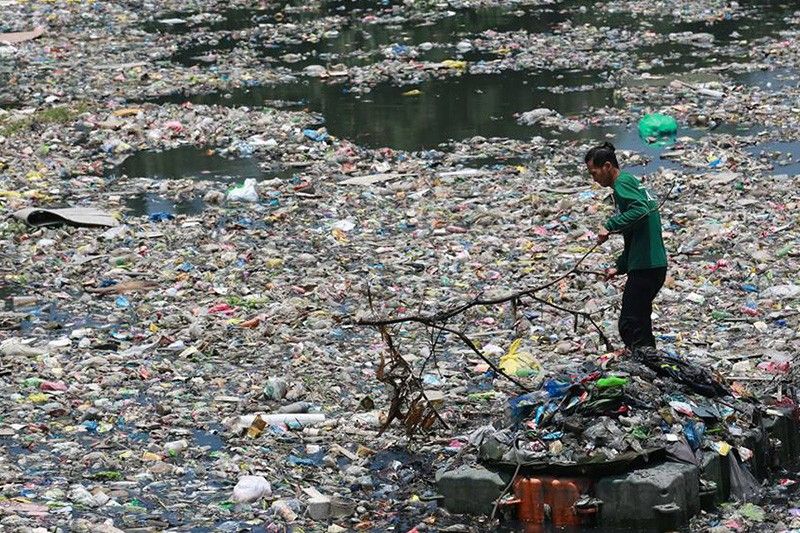Philippines: A leader in garbage


While the debate raged on about the aftermath of the ramming of a Filipino fishing vessel by a Chinese vessel in our EEZ, there actually were major events going on in the region. The most important one was the ASEAN Leaders’ Summit held in Bangkok 20-23 June where notably the President railed against the lack of progress in the negotiation of the Code of Conduct in the South China Sea saying this could lead to unforeseen incidents. Which prompts me to say that when the President stays on-script he makes a lot of sense. But it is his off the cuff remarks that draw headlines and so this week the debate has shifted to the Constitution being labeled a toilet paper. I will wait till next week how this will go down to see if it is fit for further perorations. By then the headlines might be dominated by the report of the President’s neophyte son running for the Speakership. For now, on to something of real consequence to mankind.
One of the outcomes of the ASEAN Summit was the “Bangkok Declaration On Combating Marine Debris in ASEAN Region” which indicates just how important this issue has become. Marine debris consists of solid waste generated on land that find their way into the ocean as well as those resulting from activities at sea from fishing, maritime transport and marine tourism. The first consists mostly of plastic which does not biologically degrade while the latter includes discarded ghost nets and waste from ships at sea.
Marine debris
To us landlubbers, we are only made aware of marine debris when we see pictures of dolphins dying of starvation after swallowing a plastic garbage bag as recently happened in Palawan. Or of turtles and sharks trapped in discarded fishing nets and dying of asphyxiation. Poor fish but no big deal right? But sail cross Manila Bay and you will soon find yourself in the middle of a floating island of garbage that stretches across its length. Freedom Island, a 30-hectare mangrove forest and salt marshes that protects the city from surges generated by storms and an important stop for migratory birds, is drowning in garbage. In fact, ocean currents draw all these garbage into five massive patches in the world’s oceans. The mother of all of them is the Great Pacific Garbage which lies between Hawaii and California. It measures 1.6 million square kilometers – more than five times the land area of the Philippines. Ongoing research has shown that aside from being unsightly and causing untold numbers of deaths of marine life, such a massive accumulation of plastic has significant health risks for mankind as the plastic dissolve into nanoparticles which eventually find their way into our food chain.
A 2015 report on plastic pollution by the Ocean Conservancy charity and the McKinsey Centre for Business and Environment has shown that China is the biggest ocean polluter accounting for 3.53 million tons of the plastic waste that ends up in global waters annually. But before we bash China again not only for their destructive fishing methods that destroy and pollute the marine environment - as they deserve to be - we should not exonerate ourselves. The Philippines has the dubious distinction of being the third largest contributor to ocean pollution after Indonesia – globally!! We produce about two million tons of plastic waste and around 800,000 tons of this ends up in the ocean every year.
According to government data, the Philippines generates an estimated 43,684 tons of garbage daily, including 4,609 tons of plastic waste. Due to the lack of proper disposal facilities provided by the authorities combined with plain indiscipline on the part of the public, garbage piles up, makes their way to the sea and either end up clogging coastlines or get eventually sucked up by ocean currents to form these massive garbage patches. Most of the waste generated by the Philippines consists of single-use plastics – a product of our “sachet” or “tingi” culture.
The irony is we have one of the most advanced legislation on waste management in the world. RA 9003 or the Ecological Solid Waste Management Act of 2000 mandated city and municipal governments to organize and sustainably manage the collection and disposal of solid waste. It also directed the closure of open dump sites and created the National Solid Waste Management Commission to oversee the law’s implementation. To date, however, there are only 139 operational sanitary landfills servicing just 308 of the country’s 1,634 LGUs, and at least 425 illegal dumpsites still operate across the country. And only 24 percent of the country’s 42,036 villages had operational MRFs.
Eligio Ildefonso, executive director of the National Solid Waste Management Commission Secretariat blames it on the lack of implementation and political will on the part of local governments and poor garbage disposal habits on the part of the public.
Empowering LGUs
I have mentioned this in my previous columns many times but it bears repeating. Our experience at the Zuellig Family Foundation (ZFF) in carrying out our mission to reduce maternal death has shown, it is in capacitating LGUs and getting them to claim ownership that is the most effective approach. Empowering the local chief executives will ensure the sustainability of a program.
Von Hernandez, global coordinator of the Break Free From Plastic Movement and Froilan Grate, executive director of Global Alliance for Incinerator Alternatives Asia Pacific also said that this approach worked in the city of San Fernando in Pampanga. There, in 2012, a charity called the Mother Earth Foundation worked with schools on waste reduction that resulted in an estimated 70 percent of the city’s waste being recycled that would otherwise have ended up in a local dump site. Today, the city is regarded as a model for decentralized waste management and has been labelled one of the best zero-waste models in Asia-Pacific.
So if it can be done in one locality, it stands to reason that it CAN be replicated. With proper guidance and vision from the top, the rest of the country should fall in line. Otherwise, RA 9003 is worth no more than toilet paper.
- Latest
- Trending


























